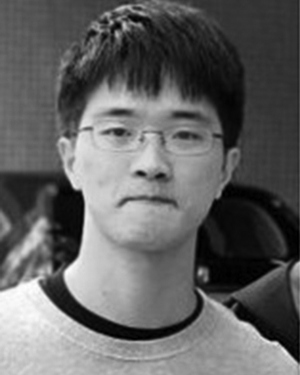Abstract:
In robotic deformable object manipulation (DOM) applications, constraints arise commonly from environments and task-specific requirements. Enabling DOM with constraints i...Show MoreMetadata
Abstract:
In robotic deformable object manipulation (DOM) applications, constraints arise commonly from environments and task-specific requirements. Enabling DOM with constraints is, therefore, crucial for its deployment in practice. However, dealing with constraints turns out to be challenging due to many inherent factors, such as inaccessible deformation models of deformable objects (DOs) and varying environmental setups. This article presents a systematic manipulation framework for DOM subject to constraints by proposing a novel path set planning and tracking scheme. First, constrained DOM tasks are formulated into a versatile optimization formalism, which enables dynamic constraint imposition. Because of the lack of the local optimization objective and high state dimensionality, the formulated problem is not analytically solvable. To address this, planning of the path set, which collects paths of DO feedback points, is proposed subsequently to offer feasible path and motion references for the DO in constrained setups. Both theoretical analyses and computationally efficient algorithmic implementation of path set planning are discussed. Lastly, a control architecture combining path set tracking and constraint handling is designed for task execution. The effectiveness of our methods is validated in a variety of DOM tasks with constrained experimental settings.
Published in: IEEE Transactions on Robotics ( Volume: 39, Issue: 6, December 2023)
Funding Agency:

Department of Mechanical and Automation Engineering, The Chinese University of Hong Kong, Hong Kong SAR, China
Multi-Scale Medical Robotics Center, Hong Kong
Jing Huang (Member, IEEE) received the B.Eng. degree in mechanical engineering from Tsinghua University, Beijing, China, in 2017 and the Ph.D. degree in mechanical and automation engineering from The Chinese University of Hong Kong, Hong Kong, China, in 2022.
He is currently a Postdoctoral Fellow with the Multi-Scale Medical Robotics Center, Hong Kong, and also an Honorary Postdoctoral Fellow with the Department of Mechani...Show More
Jing Huang (Member, IEEE) received the B.Eng. degree in mechanical engineering from Tsinghua University, Beijing, China, in 2017 and the Ph.D. degree in mechanical and automation engineering from The Chinese University of Hong Kong, Hong Kong, China, in 2022.
He is currently a Postdoctoral Fellow with the Multi-Scale Medical Robotics Center, Hong Kong, and also an Honorary Postdoctoral Fellow with the Department of Mechani...View more

Department of Mechanical and Automation Engineering, The Chinese University of Hong Kong, Hong Kong SAR, China
Multi-Scale Medical Robotics Center, Hong Kong
Xiangyu Chu (Member, IEEE) received the B.Eng. degree in automation, the M.Eng. degree in control science and engineering from the Harbin Institute of Technology, Harbin, China, in 2015 and 2017, respectively, and the Ph.D. degree in mechanical and automation engineering from The Chinese University of Hong Kong, Hong Kong, China, in 2021.
He was a Visiting Student with Carnegie Mellon University, Pittsburgh, PA, USA, in 20...Show More
Xiangyu Chu (Member, IEEE) received the B.Eng. degree in automation, the M.Eng. degree in control science and engineering from the Harbin Institute of Technology, Harbin, China, in 2015 and 2017, respectively, and the Ph.D. degree in mechanical and automation engineering from The Chinese University of Hong Kong, Hong Kong, China, in 2021.
He was a Visiting Student with Carnegie Mellon University, Pittsburgh, PA, USA, in 20...View more

Department of Mechanical and Automation Engineering, The Chinese University of Hong Kong, Hong Kong SAR, China
Xin Ma (Member, IEEE) received the B.Eng. and Ph.D. degrees in mechanical and electronic engineering from the Dalian University of Technology, Dalian, China, in 2011 and 2017, respectively.
From 2017 to 2019, he was with The Chinese University of Hong Kong, Hong Kong, as a Postdoctoral Fellow. From 2019 to 2021, he was with Purdue University, as a Postdoctoral Fellow. He is currently a Research Assistant Professor with the...Show More
Xin Ma (Member, IEEE) received the B.Eng. and Ph.D. degrees in mechanical and electronic engineering from the Dalian University of Technology, Dalian, China, in 2011 and 2017, respectively.
From 2017 to 2019, he was with The Chinese University of Hong Kong, Hong Kong, as a Postdoctoral Fellow. From 2019 to 2021, he was with Purdue University, as a Postdoctoral Fellow. He is currently a Research Assistant Professor with the...View more

Department of Mechanical and Automation Engineering, The Chinese University of Hong Kong, Hong Kong SAR, China
Multi-Scale Medical Robotics Center, Hong Kong
Kwok Wai Samuel Au (Member, IEEE) received the B.S. and M.S. degrees in mechanical and automation engineering from The Chinese University of Hong Kong, Hong Kong, China, in 1997 and 1999, respectively, and the Ph.D. degree from the Department of Mechanical Engineering, Massachusetts Institute of Technology (MIT), Cambridge, MA, USA, in 2007.
He is currently a Professor with the Department of Mechanical and Automation Engin...Show More
Kwok Wai Samuel Au (Member, IEEE) received the B.S. and M.S. degrees in mechanical and automation engineering from The Chinese University of Hong Kong, Hong Kong, China, in 1997 and 1999, respectively, and the Ph.D. degree from the Department of Mechanical Engineering, Massachusetts Institute of Technology (MIT), Cambridge, MA, USA, in 2007.
He is currently a Professor with the Department of Mechanical and Automation Engin...View more

Department of Mechanical and Automation Engineering, The Chinese University of Hong Kong, Hong Kong SAR, China
Multi-Scale Medical Robotics Center, Hong Kong
Jing Huang (Member, IEEE) received the B.Eng. degree in mechanical engineering from Tsinghua University, Beijing, China, in 2017 and the Ph.D. degree in mechanical and automation engineering from The Chinese University of Hong Kong, Hong Kong, China, in 2022.
He is currently a Postdoctoral Fellow with the Multi-Scale Medical Robotics Center, Hong Kong, and also an Honorary Postdoctoral Fellow with the Department of Mechanical and Automation Engineering, The Chinese University of Hong Kong. His research interests include robot manipulation, robot vision, and motion and path planning.
Jing Huang (Member, IEEE) received the B.Eng. degree in mechanical engineering from Tsinghua University, Beijing, China, in 2017 and the Ph.D. degree in mechanical and automation engineering from The Chinese University of Hong Kong, Hong Kong, China, in 2022.
He is currently a Postdoctoral Fellow with the Multi-Scale Medical Robotics Center, Hong Kong, and also an Honorary Postdoctoral Fellow with the Department of Mechanical and Automation Engineering, The Chinese University of Hong Kong. His research interests include robot manipulation, robot vision, and motion and path planning.View more

Department of Mechanical and Automation Engineering, The Chinese University of Hong Kong, Hong Kong SAR, China
Multi-Scale Medical Robotics Center, Hong Kong
Xiangyu Chu (Member, IEEE) received the B.Eng. degree in automation, the M.Eng. degree in control science and engineering from the Harbin Institute of Technology, Harbin, China, in 2015 and 2017, respectively, and the Ph.D. degree in mechanical and automation engineering from The Chinese University of Hong Kong, Hong Kong, China, in 2021.
He was a Visiting Student with Carnegie Mellon University, Pittsburgh, PA, USA, in 2020. He is currently a Postdoctoral Fellow with the Multi-Scale Medical Robotics Center, Hong Kong, and also an Honorary Postdoctoral Fellow with the Department of Mechanical and Automation Engineering, The Chinese University of Hong Kong. His research interests are underactuated robotics, nonholonomic control, robot programming, and bioinspired robots.
Xiangyu Chu (Member, IEEE) received the B.Eng. degree in automation, the M.Eng. degree in control science and engineering from the Harbin Institute of Technology, Harbin, China, in 2015 and 2017, respectively, and the Ph.D. degree in mechanical and automation engineering from The Chinese University of Hong Kong, Hong Kong, China, in 2021.
He was a Visiting Student with Carnegie Mellon University, Pittsburgh, PA, USA, in 2020. He is currently a Postdoctoral Fellow with the Multi-Scale Medical Robotics Center, Hong Kong, and also an Honorary Postdoctoral Fellow with the Department of Mechanical and Automation Engineering, The Chinese University of Hong Kong. His research interests are underactuated robotics, nonholonomic control, robot programming, and bioinspired robots.View more

Department of Mechanical and Automation Engineering, The Chinese University of Hong Kong, Hong Kong SAR, China
Xin Ma (Member, IEEE) received the B.Eng. and Ph.D. degrees in mechanical and electronic engineering from the Dalian University of Technology, Dalian, China, in 2011 and 2017, respectively.
From 2017 to 2019, he was with The Chinese University of Hong Kong, Hong Kong, as a Postdoctoral Fellow. From 2019 to 2021, he was with Purdue University, as a Postdoctoral Fellow. He is currently a Research Assistant Professor with the Department of Mechanical and Automation Engineering, The Chinese University of Hong Kong.
Xin Ma (Member, IEEE) received the B.Eng. and Ph.D. degrees in mechanical and electronic engineering from the Dalian University of Technology, Dalian, China, in 2011 and 2017, respectively.
From 2017 to 2019, he was with The Chinese University of Hong Kong, Hong Kong, as a Postdoctoral Fellow. From 2019 to 2021, he was with Purdue University, as a Postdoctoral Fellow. He is currently a Research Assistant Professor with the Department of Mechanical and Automation Engineering, The Chinese University of Hong Kong.View more

Department of Mechanical and Automation Engineering, The Chinese University of Hong Kong, Hong Kong SAR, China
Multi-Scale Medical Robotics Center, Hong Kong
Kwok Wai Samuel Au (Member, IEEE) received the B.S. and M.S. degrees in mechanical and automation engineering from The Chinese University of Hong Kong, Hong Kong, China, in 1997 and 1999, respectively, and the Ph.D. degree from the Department of Mechanical Engineering, Massachusetts Institute of Technology (MIT), Cambridge, MA, USA, in 2007.
He is currently a Professor with the Department of Mechanical and Automation Engineering, The Chinese University of Hong Kong and also the Director with the Multi-Scale Medical Robotics Center, InnoHK. Before joining The Chinese University of Hong Kong, he was the Manager of Systems Analysis with the Department of New Product Development, Intuitive Surgical, Inc., Sunnyvale, CA, USA. He coinvented the FDA-approved da Vinci Single-Site surgical platform and was also a founding team member for the da Vinci ION system. During his Ph.D. study, he also coinvented the MIT Powered Ankle-foot Prosthesis with Prof. H. Herr. He holds ten U.S. Patents and more than eight pending U.S. Patents.
Dr. Au was the recipient of numerous awards including the first prize in the American Society of Mechanical Engineers Student Mechanism Design Competition in 2007, Intuitive Surgical Problem Solving Award in 2010, and Intuitive Surgical Inventor Award in 2011.
Kwok Wai Samuel Au (Member, IEEE) received the B.S. and M.S. degrees in mechanical and automation engineering from The Chinese University of Hong Kong, Hong Kong, China, in 1997 and 1999, respectively, and the Ph.D. degree from the Department of Mechanical Engineering, Massachusetts Institute of Technology (MIT), Cambridge, MA, USA, in 2007.
He is currently a Professor with the Department of Mechanical and Automation Engineering, The Chinese University of Hong Kong and also the Director with the Multi-Scale Medical Robotics Center, InnoHK. Before joining The Chinese University of Hong Kong, he was the Manager of Systems Analysis with the Department of New Product Development, Intuitive Surgical, Inc., Sunnyvale, CA, USA. He coinvented the FDA-approved da Vinci Single-Site surgical platform and was also a founding team member for the da Vinci ION system. During his Ph.D. study, he also coinvented the MIT Powered Ankle-foot Prosthesis with Prof. H. Herr. He holds ten U.S. Patents and more than eight pending U.S. Patents.
Dr. Au was the recipient of numerous awards including the first prize in the American Society of Mechanical Engineers Student Mechanism Design Competition in 2007, Intuitive Surgical Problem Solving Award in 2010, and Intuitive Surgical Inventor Award in 2011.View more


